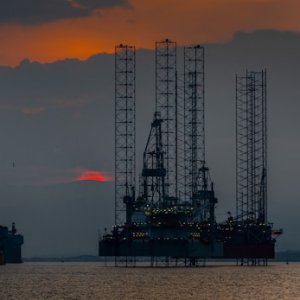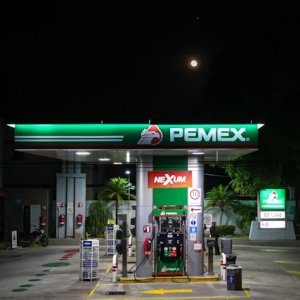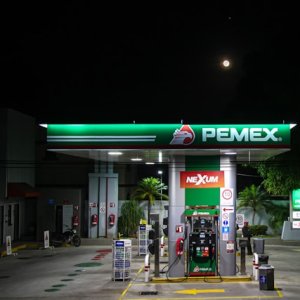A Unique Deepwater Project Moves Forward

STORY INLINE POST
Q: How was the Trion project and its history presented to you when you first took over the project in 2019?
A: BHP acquired 60 percent participating interest and operatorship of the Trion block in 2016, through a successful bidding round. The field was discovered by Pemex in 2012 and appraised by both Pemex and BHP. When I joined the project in July 2019, the BHP second appraisal well was being drilled and confirmed large volumes of hydrocarbons in the ground. Based on this well result, a decision was made internally to move Trion into the study stage and portray it as the petroleum organization flagship project for BHP in a new country that could potentially become the anchor for future development in the region. My motivation was to build on the excellent job done by our appraisal team, move Trion through our internal investment process with the support of our JV partner PEMEX, and ultimately deliver the first deepwater oil development in Mexico and leave a lasting legacy in Mexico. I knew Trion would be a fantastic opportunity and I was extremely excited by this. It has been a privilege to lead my team for the last two years and built a very valuable working environment with all our key stakeholders in Mexico, particularly PEMEX.
Q: How would you compare Trion with other projects you have been involved with at a global level?
A: Trion is very unique in nature as it is the first Deepwater development in Mexico and brings a different set of complexity (technical, stakeholder management, new country entry) as compared to the projects I have been working on throughout my career. It is the first time for me and the BHP Petroleum organization to work closely with a National Oil Company, despite having experience in joint ventures with International Oil Companies. We are also exposed to a new regulatory environment, which is quite different from other regions we operate. Trion is a lot of “first” for the organization and me and it is what makes it even more exciting and rewarding.
Q: How would you evaluate the project’s adaptation to the conditions imposed by the events of 2020?
A: Like many people around the world, the pandemic has impacted and continues to impact us individually and as an organization and forced us to change our ways of working and engaging. Our first priority was the health and wellbeing of our team and contractors. The pandemic hit as we just commenced some key study work with selected contractors. In March 2019, and for 14 months, we only work remotely from our home. Despite these new and unexpected challenges, we did perform well and met all our project milestones. We even successfully completed the first Deepwater Ocean Bottom Node (OBN) Survey in Mexico. Overall we adapted very well to the new environment by being productive and keeping our people safe.
The collapse in oil price that resulted from the economic effects of the pandemic also severely impacted our business partners, contractors and many communities. To support the communities in need and the supply chain, BHP took some actions in forms of donations as a response to COVID-19 relief and advanced payment to our suppliers.
I would also like to recognize the actions taken by CNH and ASEA to extend some of the contractual deadlines and continue processing the reviews of documentation and application during this challenging time.
Q: How would you describe your initial communications with PEMEX? How have you adapted to the NOC’s working methods and processes?
A: Having worked JVs with IOC around the world, partnership success is based on trust and respect. I did not see any differences engaging with the Mexican National Oil Company. My intent is always to treat your partner the way you want to be treated in order to build a very good working relationship. As a NOC, PEMEX business drivers or objectives along with their approval processes could be different from ours but we spend the time to align early on key development strategies and to understand their internal processes in order to include their requirements into our workplan.
Our team made the commitment and spent the time to meet with our PEMEX counterparts and share continuously and openly the information they need to support key decision approval processes.
I am very pleased with the way we work and engage with the Pemex teams at all levels and the way we support each other.
In addition, we benefit from having PEMEX as our partner. We often leverage their knowledge of the field, their experience working with the Mexican regulators and local supply chain.
Having a common goal, which is delivering Trion and creating value for our respective organization and Mexico, really brings us together and is the foundation of our collective success.
Q: Which geological characteristics of the Trion field best exemplify the technical challenges that the project presents?
A: As compared to other reservoirs in the GoM, the Trion field is a shallower and lower pressure reservoir with very good seismic imagery and data.
However, the reservoir needs pressure support since day one. Confirmed by our SCAL and core analysis, water and gas will be injected into the reservoir to maintain the pressure and enhance the oil recovery. These secondary recovery mechanisms are driving the size of the Floating facility, which will be a large semisubmersible with a Topsides dry weight close to 20,000 metric tons.
The seabed topography with many cliffs and mountains is also increasing the complexity of the subsea architecture with multiple drill centers required to drill our wells. The slope stability of these cliffs will be tested through geotechnical surveys and results will inform the best anchoring design for our floating structures.
Q: How prepared is the Mexican industry to tackle deepwater projects and how has this shaped your collaboration with PEMEX?
A: Deepwater developments are very specific in nature and bring a different set of complexity and require different skills as compared to shallow water field development. Following the Energy reform in 2013, interests in Deepwater increased and expertise from IOC was sought to help the country and Pemex to explore, appraise and then develop these fields. While the Mexican oil and gas industry is very capable of supporting the development of shallow water fields, there is definitively an opportunity for this industry to develop its engineering to supply chain capabilities to support the Mexican Deepwater industry. We made a commitment to technology transfer by sharing our Deepwater expertise in project development and operations and Trion development could be the cornerstone for commencing this journey. As a first step, three PEMEX employees work in our subsurface team as secondaries and we would welcome many more to join us as we are progressing the development study work. We are also assessing local supply chain capabilities and will work with our key contractors to qualify and develop some local suppliers for Deepwater projects. There is a lot of work to do but many opportunities as well.
Q: How much interest have you seen in BHP’s EOIs from both national and international companies and what gaps are still pending to address?
A: Over the last two years, we issued numerous EOIs to the market for a variety of scopes of work. Trion is a high priority project for many companies. The pool of companies who have the capabilities and experience for such large Deepwater projects is limited but the interest of these companies in Trion is very high. We have actually progressed quite well our contracting plan and awarded key contracts recently. As we are engaging with national and international companies, we are confident that we will partner with the right companies to help us deliver the project.
Q: How can the project’s characteristics be transformed into an efficient model for deepwater extraction in Mexico?
A: All projects have their characteristics and challenges and it is somehow difficult to just “copy and paste” and apply a common recipe.
However, I can only re-emphasize the importance of the subsurface evaluation work and taking the time to appraise the field properly. There are always internal and external pressures or factors leading us in a path of acceleration but the reservoir shall be properly characterized to inform the key design and development decisions. The right work should always be conducted in the right sequence and reach the right level of definition to progress the development efficiently and minimize the risk of rework or possible project recycling.
Another key element for success is early engagement with contractors and supply chain to define the best execution strategy. Our industry and the supply chain has been seriously impacted by the low oil price environment and it is necessary to properly assess contractors capability, capacity and financial strength. Partnership and collaborative approach with contractors is a new model for success. Risks inherent to major Deepwater developments should be shared between owner and contractors to increase the level of ownership of all parties involved.
Q: What would you consider to be the most important aspects of the projects’ current drilling and development plan?
A: The D&C scope for phase 1 includes approximately 18 wells and the logistics and pace will be challenging. Being able to consistently execute with flawless execution will take a tremendous amount of teamwork and engagement with our 3rd party partners.
Equally important will be the wells performance and our ability to learn through surveillance as the development progresses. This is accomplished with our fit for purpose well design that has been collaboratively developed
Q: How has the project taken advantage and also been impacted by the economy of GOM drilling and the availability of deepwater professionals?
A: Fortunately enough, when the pandemic started and subsequently materially impacted our industry, Trion was still at an early stage of development study and far remote from any execution scope in the field, either for Drilling or Facility. As mentioned earlier, despite working remotely, the impact on Trion progress was minimum. Through the pandemic, we continued with our market and contractors engagement plan to increase our cost and schedule predictability and secure competitive pricing for our major scope of work.
With regards to Deepwater professionals' availability, we have been able to hire very talented and experienced people to supplement our core team, as some companies had to restructure or reorganize to address the impact of the economic downturn. I am very confident that our team has the right skills set and level of experience for successfully delivering the project.
Q: How would you describe your plans to fulfill the project’s upcoming investment and infrastructural needs?
A: We have a road map to continue progressing the Trion project towards a Final Investment Decision in 2022, which includes the finalization of the infrastructure plan. To date, we have met all our development and investment milestones and targets. Our team is fully committed to the project and fully appreciates the requirement to continuously improve the value of the investment and reach a high level of cost and schedule predictability at FID. Our plan is to continue our collaboration and engagement with our partner PEMEX and other key stakeholders in Mexico so they can support us in achieving our near and long term objectives. Likewise, we have collaboratively worked with our contractors to progress the engineering work in readiness for execution.
I am confident and excited that we have the plans and people to deliver on our commitment, which is to deliver the first Deepwater development in Mexico.
BHP defines itself as a “global resource company.” Its origins are in the Australian mining industry but it has now expanded to become a global operator of major projects in commodity extraction. One of its most important projects in Mexico is the Trion deepwater field.








 By Pedro Alcalá | Senior Journalist & Industry Analyst -
Fri, 07/23/2021 - 11:19
By Pedro Alcalá | Senior Journalist & Industry Analyst -
Fri, 07/23/2021 - 11:19
















